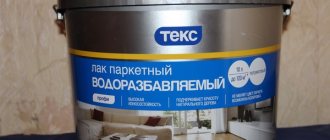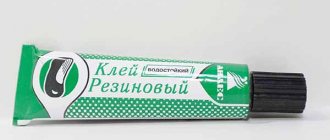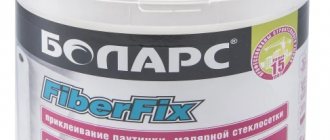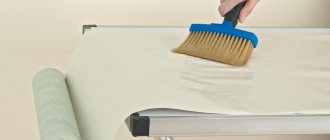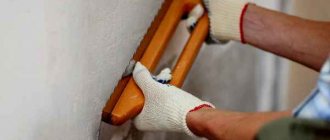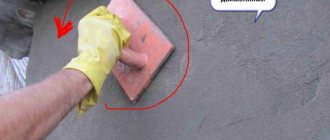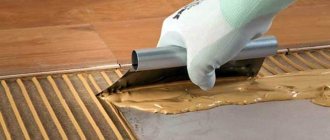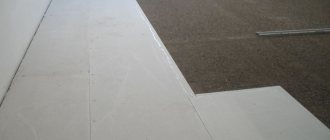What is the key to success in high-quality parquet installation?
When starting to lay parquet, parquet or solid boards, special attention should be paid to preparing the base. As practice shows, those 90% of problems that subsequently arise with parquet flooring could be avoided with proper preparation of the base.
Guarantee of high-quality parquet installation - checking the concrete base according to the following parameters:
Screed humidity
The moisture content of the concrete base should be 3.5-4% by weight or according to the European measurement system - 2% CM. The simplest method by which you can measure the moisture content of a screed is to use a multifunctional device. This device also allows you to measure the moisture content of wood.
Level control
The base on which you are going to lay the parquet must be level. This parameter is especially important if you plan to lay the parquet board using a floating method. When laying in a floating manner on an unleveled surface, you will not be able to avoid local differences in floor level. Subsequently, a person, stepping on this place, will bend the board, making a crunch.
Rules for laying parquet with glue
When laying parquet it is very important:
- Dosage the glue correctly and follow the recommended consumption of the selected adhesive composition.
- To apply the glue, use a professional notched trowel that dispenses the required amount of adhesive mixture. It is advisable to consult with a specialist so that he can select the appropriate tool.
Usually the adhesive is applied to the base, but some parquet floorers prefer to apply it to the dies. To ensure that your parquet flooring pleases you for many years with its high-quality installation and ease of use, entrust its installation to a professional craftsman. He will competently carry out all the work and tell you which glue is best to buy depending on the characteristics of the base and parquet.
Why is it better to glue parquet to plywood?
Once you are convinced that the screed is in proper condition, you can proceed to further work - laying plywood or, bypassing this stage, immediately laying parquet or solid boards.
Of course, it is still better to glue the plywood first, and the parquet onto the plywood. Because under the influence of various parameters, the parquet changes its size, which is transmitted to the plywood, which essentially compensates for such movements .
However, it is not always possible to use a multilayer structure. According to statistics, 80% of parquet, parquet and solid boards are laid directly on a concrete base. In Europe, multi-layer parquet floor construction using plywood is practically not used. At the same time, according to experts, the best screed in terms of strength characteristics is at the level of medium-strength glue.
General requirements for adhesives
Parquet adhesive, regardless of the chosen installation method and purpose, must meet the following requirements:
- Allow minimal shrinkage. That is, the consistency should not sharply decrease in thickness after hardening. This indicator can be influenced by factors such as the chemical composition, performance characteristics of the base and the creation of the solution in accordance with the basic rules.
- Elasticity. During operation, the parquet will change its linear dimensions. This can occur due to 2 reasons: thermal expansion and hygroscopicity of wood. Due to heating and cooling, the parquet board can increase or decrease in parameters. If a heated floor system was installed, but it is not recommended for block parquet, then the difference in values can be significant. The ability of wood to absorb moisture will affect the rate of change in the size of the boards.
Important! It is the elastic glue that will help compensate for all the changes that occur. Or, over time, the adhesion between the materials will begin to decrease significantly, so when pressure is applied to the parquet, squeaks or peelings appear in some areas or zones.
- Long service life. When piece natural parquet is chosen as a floor covering, you want to ensure it has high-quality fastening and durability. Typically, such floors are used in very expensive houses, mansions, premises and offices of companies; their cost is very high and is not affordable for everyone. Therefore, if the lamellas quickly peel off, then complete dismantling and new installation of the coating will be necessary.
Note! Buying the missing elements will be very problematic, since each new batch is modified by manufacturers, acquiring a new texture and color shades. The difference will be especially noticeable if the work is carried out several years later. Therefore, you will have to purchase new parquet for the entire floor area.
- Minimum amount of water. Natural parquet, made from high-quality wood, like other lumber, is able to absorb moisture. Prolonged exposure to liquid can cause visual changes in the material and warping. Therefore, parquet adhesive must be selected by carefully studying the composition and water content in it.
- Environmental safety and the absence of an unpleasant odor are also important points when choosing an adhesive. Government organizations monitor the toxicity of glue compositions, including fumes that are unsafe for humans. Therefore, on sale you can find all compositions that are intended for use in enclosed spaces. In addition, parquet is a dense material that blocks the penetration of air through it.
If you know and take into account all the listed requirements for substances, you can find the optimal adhesive for parquet boards. However, it is not enough to glue the parquet board with high-quality glue to ensure the strength and durability of the floor covering. The correct choice of glue is a very important condition in the work, but it is far from the only one that can ensure a long service life without causing defects in the parquet floor.
What kind of glue can be used to glue parquet to the screed?
Knowing about all the advantages of using a multi-layer structure for a parquet floor, for one reason or another you still chose the installation method without using plywood. In this case, you need to choose an adhesive that is suitable for gluing parquet (or solid) boards directly to the screed. Such glue must first of all be elastic. After all, when the non-elastic glue hardens, it becomes, roughly speaking, like a stone. With a natural change in size, after some time the parquet board will come off the screed. Whereas the use of elastic adhesive reduces the load on the floor.
If you need to glue something to a concrete base, Bona specialists recommend using a silane-based adhesive called Bona R-850. The rubber contained in this glue allows it to stretch, thereby compensating for all the natural movements of the parquet. In this case, the type, size and coating of the wood do not play any role.
Of course, two-component polyurethane adhesive also allows you to glue parquet to a concrete base. However, after mixing the components of such glue, you have a strictly defined time during which this material must be used up. R850 glue does not have this parameter, since the glue is one-component. After you have applied it, you can lay the parquet within 40 minutes, and the glue that remains in the jar is stored for quite a long period of time.
The back side of most solid boards currently sold is impregnated with a primer layer. The presence of such a layer means that you can only use two-component polyurethane adhesive or silane-based adhesive - Bona R-850.
But this glue has a number of other advantages.
Examples of using parquet adhesive in different situations
We have already looked at the types of adhesive compositions. In addition to the characteristics of the glue itself, it is very important to take into account the type, properties and dimensions of the parquet material that you will be laying using the selected glue. Parquet or parquet boards, wood: oak, ash, fruit or exotic woods, or maybe solid boards? It is also important what the basis is. Which adhesive is better to choose for parquet in different cases?
The process of laying a parquet floor is described in the article: Laying a parquet floor with your own hands
Plywood is glued to the screed without the use of screws
It is important here that the parquet adhesive for plywood has the best adhesion to wood and cement-sand screed. The highly elasticity of the adhesive composition is also important to reduce stress between the base and the plywood sheets.
Plywood is glued to the screed with self-tapping screws
Thanks to the additional fastening with self-tapping screws, the requirement for the adhesive composition is somewhat less. In this case, the fixed plywood will practically not “walk”; you can use Bostik water-based parquet adhesive.
Piece parquet made of ash and oak without coating is glued to plywood
Ash and oak are stable, moisture-resistant wood materials. Parquet flooring with dimensions up to 420x70 mm can be glued with water-based dispersion glue. Exposure to a small amount of moisture contained in the adhesive will not harm block parquet made from these materials. Please note that the drying time of dispersion adhesive is longer than, for example, two-component adhesive.
Factory coated ash or oak parquet is glued to a plywood base
In this situation, it is possible to use one-component or two-component Artelit adhesive, since on coated parquet it will be immediately visible if the parquet is warped even a little. Therefore, dispersion adhesive containing water should not be used here.
Any parquet material with a varnish layer on the underside can be glued
In this situation, the adhesive composition must have the highest possible resistance to the possibility of separation from the base due to the varnish surface. The varnish layer may also come off from the wood, which also cannot be allowed. Before installation, you should try gluing one parquet flooring for testing, and carry out installation only if the result is good.
Uncoated piece parquet from fruit and exotic species, maple, beech is glued to plywood
We consider types of wood that are classified as unstable due to their sensitivity to fluctuations in humidity and temperature, i.e. deformation and warping are possible. Therefore, water-free parquet adhesive, such as Bona, is suitable for them.
Solid board or parquet board is glued to plywood
The parquet board is multi-layered and has a locking system for connecting the boards together during installation. For this reason, glue for gluing parquet or solid boards to plywood should not contain water in its composition. Otherwise, long and wide parquet and solid boards may warp.
The adhesive for parquet boards must certainly have good elasticity; this will allow, if necessary, to allow the flooring material, like any wood, to “walk”: release the parquet and attract it to the plywood base. A two-component adhesive for parquet boards is suitable.
A solid wood board with a width of less than 120 mm is glued to a plywood base
This massive board is considered narrow. But a dispersion adhesive composition containing water, which can over-moisten the wood material and lead to warping of the board, is not suitable for it.
The next requirement for the adhesive is its high elasticity and good strength in order to reduce the stress that occurs when humidity levels change between the plywood base and the solid board. This is most important in spring or autumn, outside the heating season. Two-component polyurethane adhesive for parquet, parquet and solid boards is suitable for installation.
A solid wood board with a width of more than 120 mm is glued to a plywood base
This is a massive board of large width, for this there are other requirements for the adhesive composition: it must be resistant to the effects of tearing the board away from the plywood due to significant stresses between the wide solid wood board and the plywood base. The one-component parquet adhesive Berger Bond P1, based on high-quality synthetic resin, best meets this requirement.
Glue any parquet flooring onto a weak cement screed
This is not a very good option, especially if the screed is weak. But if such flooring is necessary, it is important that the adhesive composition for parquet has the best adhesion to various surfaces of the base, that is, maximum adhesion to the base is needed at the physical level in order to avoid tearing off the adhesive layer. In this case, craftsmen advise using one-component Berger Bond M1S adhesive, which has high elasticity, as an adhesive for parquet boards on the screed.
Any parquet covering is glued to a durable cement-sand screed
This option is, of course, better than the previous one, because the screed is durable. Here it is possible to use two-component parquet adhesive Adesiv, which has high strength.
A solid wood board with a width of over 120 mm is glued onto a durable cement-sand screed
Such situations are quite rare, but they do happen. Requirements for parquet adhesive:
- high elasticity (two-component adhesive);
- the glue should be as resistant to vertical tearing of the board from the base as possible.
That is, when choosing an adhesive composition for parquet material and solid boards, you should definitely take into account all the specific circumstances and properties of the glue:
- adhesion to a given substrate;
- moisture resistance;
- consumption of adhesive composition;
- manufacturer's company;
- wear resistance.
In each specific case, a parquet adhesive is selected that is most suitable for the given conditions.
Watch the video “Laying parquet boards on plywood using glue”:
Advantages of using Bona R-850 glue
- Wood does not swell
- No need to prime
- More elastic than others
- Easily removed from the surface without leaving stains
- Does not contain solvent or water
- Stability of adhesive grooves
- Can be immersed after approximately 24 hours
- It is easy to work with because it does not stain your hands and does not turn black
- Very good adhesion to all common primers and chipboards
- Suitable for all types of wood sold and all sizes
Most often, the surface of the parquet board to be laid is already varnished. If two-component adhesive gets on a varnished surface, it is difficult to clean it without damaging the surface. It is possible to use mechanical cleaning, but some pieces will still remain. To clean two-component polyurethane adhesive from a varnished surface, you need to use solvents. It cannot be cleaned with light solvents, and those that can clean such glue damage the varnished coating, reducing its glossiness.
One of the flooring experts gave an example from practice: “Sometimes you arrive at a site and the newly laid parquet floor is all stained... It immediately becomes clear that the craftsmen stained the parquet with glue and then tried to clean it.”
R-850 glue does not have this problem at all. It is removed from the varnished surface without damaging it.
How to use parquet glue
We have already mentioned that not a single, even the most high-quality and expensive, parquet adhesive will provide the necessary degree of adhesion of the flooring to the concrete base if the rules of use are grossly violated. How to lay parquet to ensure the long life of the parquet floor?
Step 1. Calculate the size of the room, buy suitable glue taking into account the consumption rate per unit area.
Scheme for calculating the square footage of the floor and walls of a rectangular room
Practical advice. The standards indicated by the manufacturer on the packaging do not correspond to practical consumption. The fact is that they are designed for a perfectly flat surface and the same thickness of material applied. In practice, such conditions do not exist; always buy glue with a small margin. This is much more profitable than interrupting the parquet laying process due to a lack of material.
Step 2. Check the condition of the concrete screed.
Concrete screed
Small cracks may not be sealed, but differences in height of more than two millimeters per linear meter will have to be eliminated. The easiest way to make a self-leveling floor is that it has high strength and allows you to get a flat surface. If this cannot be done for some reason, then the concrete base can be leveled using a cement-sand screed.
Important. The strength of the parquet flooring is directly related to the strength of the base. If the screed crumbles, then no glue will help. When preparing the solution, increase the amount of cement by about 15–20% of the usual rate.
If possible, it is recommended to sand the surface of the base with special grinding machines before laying the parquet. They will not only level the floor, but also remove milk from the concrete, thereby significantly increasing the strength of the coating surface. This is very important for high-quality laying of block parquet.
The photo shows manual grinding of a concrete surface with dust removal
Step 3: Thoroughly clean the room with a vacuum cleaner. The surface of the concrete should not only be free of large construction debris, but also sand and dust. The cleaner the base, the stronger the parquet will stick.
Cleaning the premises
Step 4. Check the moisture content of the concrete base. This can be done using a special device; take measurements in several places, always in the corners of the room, here the humidity always has increased values.
Device for determining the moisture content of a concrete floor
If there is no device, then do it by eye: after pouring the mixture, it should harden for at least 14 days, the room should be constantly ventilated for the last 2-3 days. Depending on the brand of glue, work can be started when the relative humidity on the base surface is less than 5%; some compositions can be used at lower humidity.
Step 5. Make a preliminary layout of the parquet; if desired, you can draw control lines on the base, with their help it is easier to check the correctness of installation.
Types of parquet installation
Practical advice. If you plan to lay parquet in a herringbone pattern, then prepare all the sections at once. The glue, depending on the brand, cannot be aired for more than 30 minutes, and for some compositions the time is reduced to 10 minutes. You won't have time to trim the slats.
Step 6: Prime the base. The type of primer depends on the type of glue; be sure to take these requirements into account when purchasing materials.
Pouring primer onto the floor
The primer should be evenly distributed over the entire area; use a roller. In hard-to-reach places you can work with brushes.
Spreading the primer with a roller
Make sure there are no gaps. All professionals strongly recommend covering the base with at least two layers of primer, this is especially important if the solution is quickly absorbed. During application of the second layer, the roller movements should be perpendicular to the first, this will eliminate allowances. Give the primer time to dry completely.
For normal polymerization of impregnation, a certain air humidity is required. A humidifier is used for this.
Step 7. According to the instructions supplied by the manufacturer, prepare glue for the parquet. A single portion of glue should correspond to labor productivity. Please note that adhesives should not be thinned once the curing process has begun. All proportions must be carefully observed. The glue should be stirred with an electric drill with a whisk, the chuck speed is medium.
Mixing glue
Too high speeds cause air bubbles to appear in the glue, which has a negative impact on the adhesion of materials. If you are preparing a two-component glue, then you need to stir it with special care; the hardener should be evenly distributed throughout the entire volume.
Step 8. Using a comb spatula, apply glue to the floor area; the size of the area depends on your professionalism.
Applying glue to a small area of the floor
One by one, remove the slats from the packaging and place them on the glue. At the same time, do not forget to leave a gap between the flooring and the walls, the gap width is 1–1.5 cm. Press the slats with your hands, make sure that they lie strictly horizontally. You should check the correct installation using a level or rule; if you have enough experience in performing such work, then control can be done visually. But we do not advise beginners to do this; the risks of mistakes are high.
Laying the first parquet lamella
There must be a gap between the wall and the parquet
Practical advice. Professional builders simply increase the bonding strength of parquet and completely eliminate the risk of squeaks while walking.
It's done like this. Three or four lamellas are folded into an even stack and, on the side of the spikes, are leaned against the floor with glue applied. Due to this, a little glue remains on the spikes; they fit into the grooves and significantly increase the stability of the coating. Such actions do not take much time, and the positive effect is noticeable. There is no need to be afraid that glue will appear on the surface of the parquet; a small amount of it will always be hidden in the grooves.
Parquet laying process
Cutting parquet lamellas
Laying sawn-off lamella near the wall
To make work easier, you can make a simple device to control the area of glue application. Take a piece of rope; its length should be equal to the width of 3-4 rows of parquet. Tie a pencil or marker to one end, and any smooth object to the other. Place the object against the edge of the laid parquet, pull the rope and slowly move it along the slats. A line should be drawn on the base; it will indicate how wide the glue should be applied.
Laying parquet is done in an awkward position; wear soft knee pads, this will make the work easier. It is advisable to press the laid lamellas with some kind of weight until they dry completely. You can use packs of unused parquet.
Boxes with lamellas were placed on the laid parquet
Parquet in the interior of the hallway
Prices for popular types of parquet adhesives
parquet adhesive
Video - Tips for choosing adhesive for parquet
What parameters should you pay attention to when choosing a two-component adhesive?
Nowadays there are quite a lot of two-component adhesives on the market. But you need to understand that two-component glue can be different. For example, if you use inexpensive epoxy resin-based glue, you need to be prepared for the fact that after a certain period of time it hardens and becomes very brittle. In addition, this glue does not have very good environmental parameters. Therefore, the first parameter that you need to pay attention to when choosing a two-component adhesive is its elasticity .
Moisture resistance is the next important characteristic of a two-component adhesive. Solvent-based adhesives, epoxy and water-dispersion adhesives lose their strength characteristics upon prolonged contact with water. Whereas two-component polyurethane adhesive can even be applied to the bottom of the pool.
The time during which it is necessary to use up the glue (most often it is indicated on the can) varies among different manufacturers.
The quality of the glue directly depends on the dosage . It is recommended to mix the contents of the jar entirely. If this is not possible, then at least in half. If the proportions are violated, the glue may not harden at all or harden, but lose its strength characteristics. If the glue has not hardened within 3-4 hours, you can tear everything off and re-glue it.
To avoid the above problems, experts speaking at the seminar recommended using two-component polyurethane adhesive Bona R-777 .
Unlike Uzin and Stauf adhesives, Bona R-777 adhesive can be used for 2 hours.
Types of adhesives
All adhesives produced for parquet flooring are divided into two groups. The first group includes one-component compositions - aqueous dispersions and solvent-based adhesives. The second group is two-component mixtures consisting of a base and a hardener, which must be mixed before laying the coating.
One-component
These compounds are sold completely ready for use, which reduces installation time. This is a practical and relatively inexpensive option that is great for residential areas. Depending on the basis of the composition, one-component adhesives have significant differences in characteristics.
Dispersion composition . Water-soluble adhesive containing cellulose acid or acrylic. It contains no toxic components or solvents, making it considered the safest for use in residential areas. This glue does not have a strong odor, is easy to apply and just as easy to clean when it gets on the front layer of a coating or wall. At the same time, its scope of application is quite limited due to the presence of water in the composition. Dispersion adhesive can only be used on absorbent substrates and only for coatings made of moisture-resistant wood, for example, larch, oak, merbau, teak. Less dense rocks are saturated with moisture from the glue, swell, and change color.
One-component parquet adhesive
You cannot use dispersion compositions in unheated rooms, as well as in conditions of high humidity - freezing and dampness reduce the strength of the adhesive layer, and the coating peels off. This type of glue is not suitable for rooms with high loads, since it has low peel strength.
Dispersion glue
Solvent based adhesives . These are anhydrous formulations containing rubber, MS polymers or artificial resins. They are excellent for wood coverings because they do not cause warping of the material, and can be used on a variety of substrates, including non-absorbent ones. The adhesive layer provides reliable adhesion of working surfaces, high resistance to mechanical loads and other influences. Thanks to the increased elasticity of the adhesive, the coating perfectly withstands sudden fluctuations in temperature and humidity, maintaining an ideal flatness.
Due to the presence of solvents, these adhesives are flammable substances, so installation should not be carried out near open sources of fire. Synthetic and polymer compounds have a pungent odor, and their fumes can cause irritation to the respiratory tract. When working with such adhesives, you should use protective equipment, and after the floor has dried, thoroughly ventilate the room.
S Bond Flex one-component silane parquet adhesive NPT
Two-component
These adhesives have universal properties. They are used for many types of decorative coatings and on various substrates - absorbent and non-absorbent. They are quick-drying, elastic, resistant to negative influences and almost do not shrink. It is these compositions that are the most durable. Glue is made based on polymers and comes in two types:
- epoxy-polyurethane composition - more affordable, after curing it retains elasticity within 15-20%. It has a pungent odor and requires the use of protective equipment during work;
- polyurethane composition is a high-strength and expensive adhesive, after curing it retains elasticity within 30-40%. It has almost no odor and does not contain toxic substances.
Two-component parquet adhesive
The glue consists of two parts - a polymer base and a liquid hardener, packaged in different containers. Both components are mixed immediately before application, and the time to produce the mixture is about an hour. Ready-made glue is unsuitable for storage, even in a tightly closed container, because hardening occurs as a result of a chemical reaction between the components.
Bona adhesives in practical use
In order not to remain unfounded, the seminar presenters suggested trying out Bona products in practical use. One of the specialists from the Parquet Fair company, Alexey Anukov, volunteered Bona D-705 glue By the way, Alexey has been working with parquet for 15 years, of which more than 10 in the field of installation. Over his many years of experience, he has encountered adhesives of various qualities and it was not difficult for him to evaluate Bona D-705 adhesive in practice. Not afraid to get dirty, Alexey began to apply glue right in front of all the seminar participants. His work was noted by foreign representatives of the Bona company with the words: “This is a good job!” (“This is a good job!”). Alexey himself assessed the quality of Bona D-705 glue this way:
“Bona D-705 glue is really good. I liked working with it because, despite its stated strength characteristics, it is surprisingly easy to apply. I recommend!"
At the end of the seminar, the organizers received a lot of good feedback about Bona parquet adhesives from practicing parquet layers. Now you too can buy Bona parquet chemicals and form your own opinion about it. The online store “Parquet Fair” will be grateful to you for your feedback!
On the website of our online store you can familiarize yourself with the range of Bona parquet chemicals.
If you have any questions, our specialists will be happy to advise you by phone. (812) 677-15-12.
